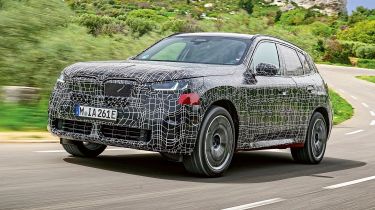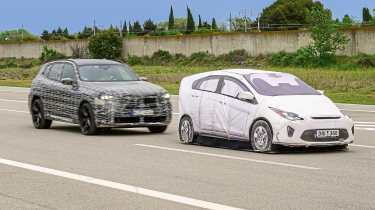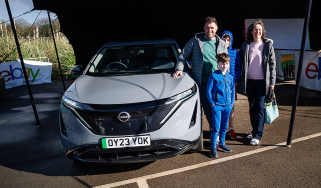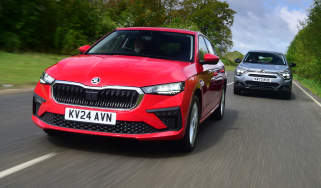New BMW X3 prototype review: first impressions of next-gen mid-size SUV
The X3 is a BMW best-seller and we’ve taken an early drive of the new model that's about to take over that baton
Verdict
The new BMW X3 is still hiding many of its secrets. But what we’ve seen so far has been positive, and it makes us curious to discover more about the overall package. We’re excited to see how the new generation of BMW’s best seller will shape up when it arrives in the summer.
It may be a long way from the brand’s base in Munich, but BMW has a second home at Autodrome de Miramas, not far from the French harbour city of Marseille. Here the German brand tunes its chassis, steering and driver-assistance systems – and today, we’re on site to see how this work has been applied to the forthcoming fourth generation of X3.
It’s a big job, too, because the X3 was BMW’s best-selling car globally in 2023, and as a model, it’s shifted more than 3.5 million examples since it was first introduced over two decades ago.
We can’t say too much about the new X3’s raw specs during this pre-drive. Its size, weight, engine performance – pretty much all technical details, in fact – are still undergoing final homologation and won’t be finalised until production starts this summer.
However, we do have the chance today to try two pre-production examples around Miramas: the plug-in hybrid version and the M Performance model, which comes with a straight-six petrol engine and range of chassis refinements designed to deliver dynamic pleasure as well as long-distance comfort. These tweaks include M-optimised axles, as well as a rear locking differential and increased body rigidity.
More reviews
Car group tests
- Land Rover Discovery Sport vs BMW X3 vs Volvo XC60
- BMW X3 vs Mercedes GLC
- BMW X3 M vs Alfa Romeo Stelvio Quadrifoglio
In-depth reviews
Road tests
Used car tests
There’s new steering, too. The spread of its abilities is enormous now, and as we flick the car between Sport and Comfort modes, we note that the X3 can be guided around the corners on the Miramas circuit with enormous precision. While it’s accurate, though, it’s not remotely twitchy – so you can still cruise in comfort.
The gamut of abilities is no less interesting in the PHEV, which mixes four-cylinder petrol power with a battery and electric motor. The car we’re trying is equipped with a new adaptive chassis, which has been tuned to dial out excessive body movements during enthusiastic driving. It feels impressive, as the damper settings ensure that sharp jolts don’t get transferred through to the spines of the cabin occupants.
Of course, the new driving characteristics are also due to the fact that BMW has widened the track of this X3, while retaining its predecessor’s generous wheelbase. The drag coefficient has been reduced to 0.27Cd, which is pretty amazing for an SUV of this size.
The latest generation of driver-assistance systems are also fairly remarkable – those little helpers that the driver is not supposed to be aware of, but which intervene so efficiently in an emergency. In fact, even in a test-track environment, it takes courage to simulate such a situation and hand over all responsibility to the assistants.
Driving towards an obstacle at speeds of up to 50mph and trusting that the braking assistant will bring the car safely to a halt at the right moment is not something that comes naturally. And yet the systems in the X3 make an excellent job of it; the car brakes gently, an acoustic and visual warning is given in the interior, and the vehicle comes to a halt just a few centimetres from the hazard. And it does so without pulling the passengers into the seat belts, which have already tightened anyway.
Of course, there are situations that require more rigorous intervention. For example, when the new turning assistant recognises a vehicle crossing the road: regardless of whether the indicator is set or not, it drops the anchor so hard that the X3 comes to an immediate halt.
The basis for a total of 40 assistants is the latest technology pack, which includes a camera for augmented-reality displays in the driver or central display, as well as an eight-megapixel object-recognition camera. There are also ultrasonic sensors and an all-round view camera system at the front.
The car’s radar, which no longer sits in the bumper but is rather hidden in the BMW kidney grille, has a horizontal and vertical range of 300 metres. Plus, there are two further short-range radars at the front and rear, as well as six ultrasonic sensors on the front and rear bumpers. And don’t forget the cameras in the side mirrors and at the rear.
It is hard to imagine the amount of data being analysed here in fractions of a second and converted into an appropriate braking or driving manoeuvre. And all without giving the driver the feeling that they are being regulated, restricted or controlled.
Now read more about the best mid-size SUVs to buy...







